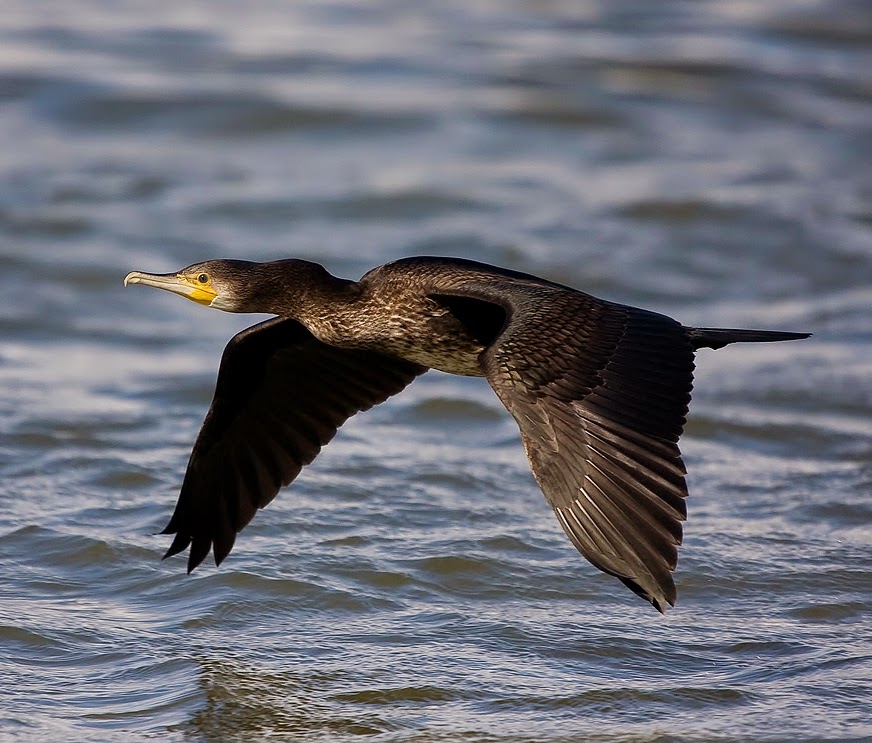 |
| Photo by Björn Dellming (PBase) |
Common name:
great cormorant (en); corvo-marinho-de-faces-brancas (pt); grand cormoran (fr); cormorán grande (es); kormoran (de)
Taxonomy:
Order Pelecaniformes
Family Phalacrocoracidae
Range:
This widespread species is found throughout most of Europe, central and southern Asia, north-western and eastern Africa, along the coast of eastern North America, and throughout Australia.
Size:
These large cormorants are 70-100 cm long and have a wingspan of 120-160 cm. They weigh 2,6-3,7 kg.
Habitat:
The great cormorant is found in coastal waters, estuaries, rocky shores, mangroves, large lakes and rivers, and deep marshes, including inland wetlands located far from the coast.
Diet:
They mostly hunt fish, such as sculpins, capelins, gadids, mullets and flatfishes, but also crustaceans, amphibians, molluscs and bird nestlings.
Breeding:
Great cormorants are monogamous and pair bonds may last several years. They nest in colonies of up to 9.000 pairs, each pair nesting in a rocky ledge in a small rocky island or coastal cliff, which they line with twigs. The female lays 3-5 bluish-green eggs, which are incubated by both parents for 28-31 days. The chicks are fed by both parents and fledge 45-55 days after hatching, but continue to receive food from the parents for another 2-3 months. They reach sexual maturity at 2-4 years of age.
Conservation:
IUCN status – LC (Least Concern)
This species has an extremely large breeding range and a global population estimated at 1,4-2,9 million individuals. The overall population trend is increasing, although some populations may be stable and others have unknown trends.







